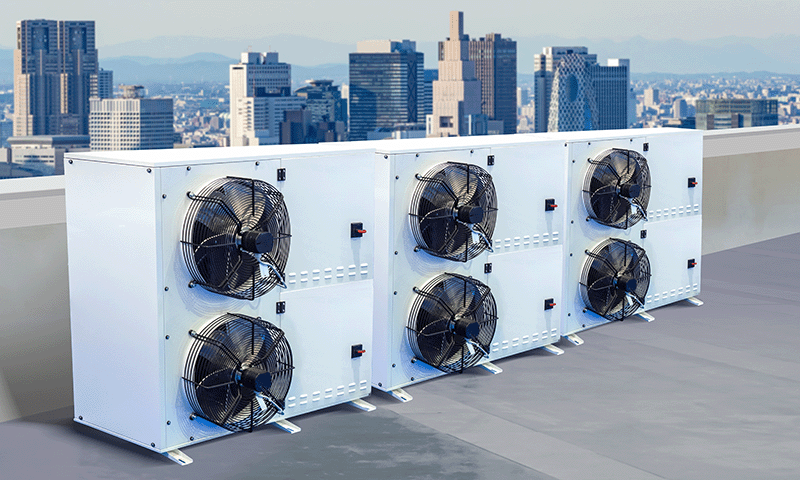Partner with Downstream

Keeping temperature and humidity in check during interior buildouts is more than a comfort issue—it’s a critical part of protecting finishes, materials, and worker productivity. When the base building HVAC system is offline or incomplete, temporary HVAC solutions fill the gap to maintain ideal environmental conditions. In tenant improvement (TI) and renovation projects, managing jobsite heating, cooling, and dehumidification can make the difference between an on-schedule project and one plagued by delays, rework, or material damage. This guide breaks down the essentials of temporary HVAC for construction, including equipment selection, placement strategy, and humidity management—plus how platforms like Downstream make sourcing these systems seamless.

Most TI projects are phased around existing building systems that aren’t always active during construction. Without a functioning HVAC, sites face:
In commercial interiors, temporary heating and cooling systems help bridge the gap—keeping spaces stable, materials protected, and schedules intact.
According to ASHRAE, controlling temperature and humidity in occupied and transitional environments is essential for maintaining both comfort and material performance.
A well-designed temporary HVAC construction setup typically includes:
Portable ACs for construction sites come in self-contained or split configurations. They’re ideal for cooling office buildouts or enclosed floors where permanent ductwork isn’t online yet.
During colder months or when base heat is unavailable, temporary heaters maintain working temperatures and help with curing materials.
Dehumidifiers for renovation projects are vital to prevent condensation and moisture-related damage.
Start with a heat load calculation—account for solar gain, lighting, equipment, and worker count. Identify how air will move through the space, ensuring balanced supply and return airflow.
Temporary systems draw substantial power. Coordinate with electrical contractors early to provide adequate circuits, and avoid overloading temporary power setups.
Dividing large floors into zones improves comfort and efficiency. Use flexible ducting to direct airflow to high-activity areas or material-sensitive zones.
When construction dust is present, pair temporary HVAC systems with HEPA filters or standalone air scrubbers. This improves indoor air quality and protects equipment from clogging.
Implement humidity and temperature sensors to track environmental conditions in real time. Regular filter changes and fuel checks prevent unexpected downtime.
Many interior materials are sensitive to moisture and temperature swings:
By maintaining consistent conditions, contractors reduce the risk of rework and maintain manufacturer warranties—helping keep budgets predictable and clients satisfied.
In vertical TI projects, proper equipment placement prevents uneven climate zones:
For dehumidification, position units in the most moisture-prone areas—often near restrooms, kitchens, or recently installed flooring.
Temporary doesn’t have to mean inefficient. Modern jobsite systems offer:
Some contractors even recover or reuse ducting and cabling across projects to reduce waste. For more sustainability guidance, refer to ASHRAE Standard 90.1 on energy efficiency in buildings.
At Downstream, we make it easy to source all your temporary HVAC, heaters, dehumidifiers, and air movers from one place.
Whether you’re stabilizing temperature during a large interior renovation or keeping humidity in check for a critical finish phase, Downstream connects you to top-tier rental options without the overhead of ownership.
With flexible rental terms, quick delivery, and verified equipment suppliers, contractors can keep sites comfortable, productive, and on schedule from start to finish.
Managing jobsite heating, cooling, and humidity control is a vital part of any tenant improvement plan. With the right mix of equipment, data-driven control, and efficient logistics, contractors can protect materials, support crews, and maintain consistent progress—even when base systems are down.
Partnering with Downstream ensures you have access to reliable temporary HVAC and dehumidification rentals tailored for your specific project conditions—so your next interior buildout stays on track, no matter the season.
-min.webp)
Quis nostrud exercitation ullamco laboris nisi ut aliquip ex ea commodo consequat. Duis aute irure dolor in voluptate.
